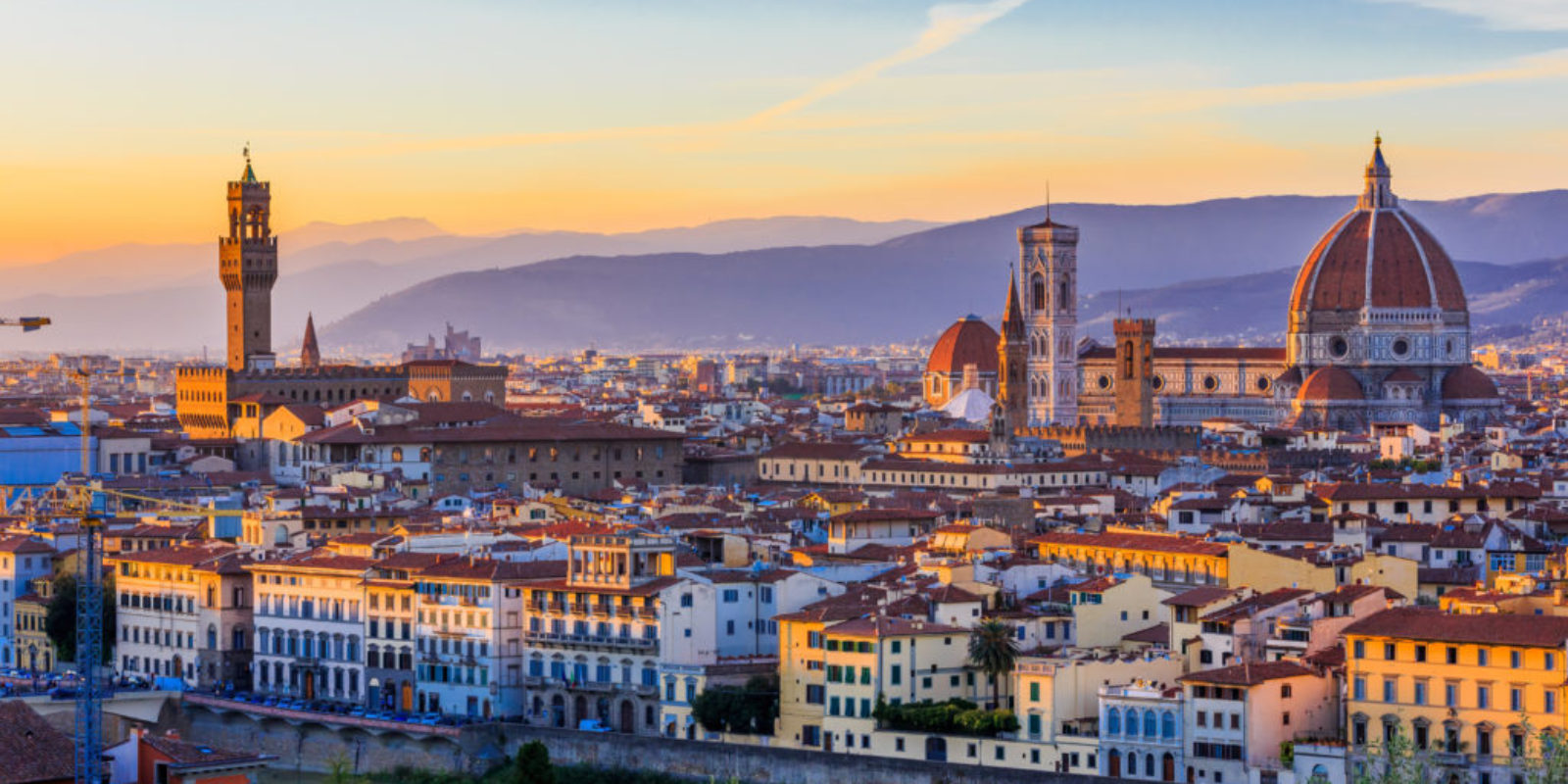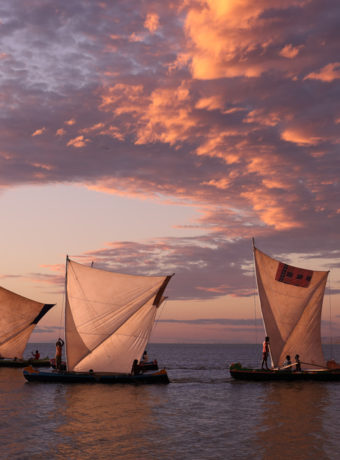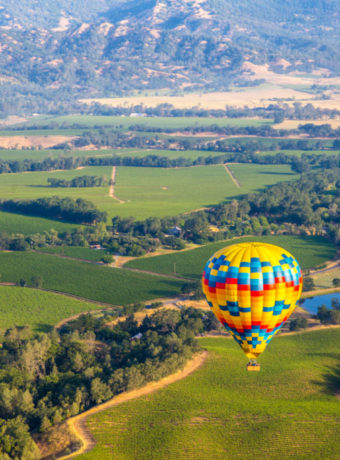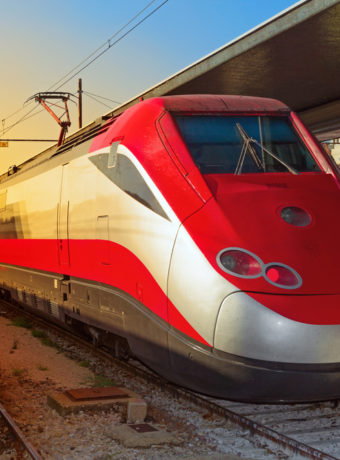For travellers on their first trip to Italy, highlights often include the Tuscan cities of Florence, Pisa, Siena and then one or two small hill towns. Those returning to Tuscany, Italy tend to venture further afield to places like Lucca, Monteriggioni, Volterra, or Cortona. In this post, I’ll share more about Florence, some of the other popular destinations in Tuscany, and where to stay, eat and enjoy all of them. *This post originally appeared on Point Me To The Plane, a travel blog I write for.*
How to Get to – And Get Around – Tuscany, Italy
The gateway for most visitors into Tuscany, Italy is either Florence Airport, Peretola (FLR) or Pisa’s Galileo Galilei International Airport (PSA). PSA is connected to the Pisa Centrale rail station by the Pisa Mover airport shuttle. FLR is connected by bus to the Santa Maria Novella train station.
While PSA is the larger of the two airports, it sees primarily budget airlines like Ryanair, Wizz Air, Vueling, and others. Pisa Airport also has flights to Munich with Lufthansa and London-Heathrow with British Airways, as well as Alitalia flights across Europe. FLR, by contrast, gets the majority of KLM Royal Dutch Airlines, TAP Air Portugal, Air France, Swiss International Air Lines, and Alitalia, among others. Therefore, those using SkyTeam miles will likely fly into Florence, rather than Pisa.

car or train in Tuscany?
Getting around Tuscany, Italy is easiest with a car – in terms of the flexibility and the freedom. However, there are some things to consider if you wish to drive. Anyone wishing to drive in Italy must have an International Drivers Permit (IDP), although most car rental companies and insurance companies won’t ask you for it. If the police catch you, however, it’s a different story. Also, I always advise my clients that driving in Europe is way different than driving in the US. The roads are smaller and windier, and the locals drive like crazy. If you can afford a driver, then you have the luxury of your own car without having the do the actual driving!

Trains in Italy
There are rail stations at most of the major towns in Tuscany, namely Florence, Pisa and Siena. The Italian trains system is pretty extensive and very easy to use. To get off the beaten path though, you really do need a car to explore the hill towns. All in all, though, Tuscany is a wonderful destination, regardless of how you explore it. It makes a great honeymoon destination, it’s perfect for families, and renting a villa with friends is an unforgettable adventure.
Florence, Italy: where to stay, what to do, and where to eat

Tuscany, Italy is a veritable traveller’s dream. Tiny mountain hamlets with outstanding views of the golden hills vie for itinerary time with Florence, Pisa, and Lucca, former capitals and communes of ancient republics.
Florence is, naturally, a highlight of Italian vacations. Brunelleschi’s Duomo, an engineering marvel, and its adjacent campanile tower over the city’s red-tiled roofline. The old city centre is compact, making it relatively easy to determine where to stay (as opposed to say, Rome) and where to eat. Major attractions in Florence include Michelangelo’s David, at the Galleria dell’Accademia, and Sandro Botticelli’s The Birth of Venus, housed at the Uffizi Galleries. Across the Arno River, at Palazzo Pitti, art enthusiasts can view an extensive Raphael collection as well as works by Titian and Caravaggio. The Boboli Gardens lies just behind the Palazzo and offer wonderful views of the rooftops of Florence. Of course, there are plenty of other works of art and sculpture at these famous galleries.

Insider tip: The best way to see Florence’s many museums is with a private or small group guide. Often, the exclusive tours offer skip the line tickets, and you have the added benefit of a knowledgeable and interesting guide – usually a Florentine local! – who knows the tiniest details about everything. If you plan to visit a lot of museums, you can purchase the Firenze Card, either online prior to your visit or at a local kiosk. This card also allows skip the line access to holders at most museums and the Duomo, and your guide then doesn’t have to purchase tickets for you.
hotels In Florence, Italy
In addition to tiny pensions, AirBnBs, and small luxury hotels like Hotel Brunelleschi or Lungarno Collection, there are also several brand name hotels in Florence. The Four Seasons is located on within a walled garden just east of the Galleria dell’Accademia. Hotel Savoy, a Rocco Forte property, is at Piazza della Repubblica.
Those using Starwood Preferred Guest points (which have merged with both Marriott Rewards and Ritz-Carlton Rewards) have several options in Florence. The St. Regis and Westin Excelsior lie across a square from one another, mere minutes from the Duomo, Ponte Vecchio, and Uffizi Galleries. On a more mid-range scale, there is an AC Marriott near Santa Maria Novella train station. Of these hotels, it’s the furthest from the major sites, but still within walking distance.

where to eat in Florence, Italy
As in all major tourist cities, the closer you are to the attractions the more likely you are to get ripped off – or at least have a not-so-great meal. I tend to stay away from restaurants that have menus with pictures or options in five different languages. For me, the smaller the better, and I always keep an eye on who’s dining there. Is it the right time for locals to eat? If it is, and the restaurant is busy, chances are good that it’s a local favourite. Some of my best meals in Italy have resulted from my wandering with a very empty stomach, waiting to find a bustling restaurant at 9pm.

All of the luxury hotels in Florence have excellent restaurants. For wanderers, my rule of thumb is to go at least two blocks from the major tourist attraction. As my brother says, all restaurants in Rome are touristy. He may be right, but the chances of a better meal for a better price go up the further you walk. Head for Oltrarno, south of the river, for local osterie and trattorie.
Types of Restaurants in Tuscany
It can be confusing to eat out in Tuscany, Italy. What is a trattoria? How does it differ from an enoteca, or an osteria? Are they all considered ristoranti? These labels denote the type of restaurant it is. An osteria often serves simpler, home-style meals. Don’t expect white tablecloths and fussy waiters; there’s usually not even a printed menu. They may even sell meats, cheeses, and more in the front of the building. A trattoria is more formal than an osteria, but less formal than a ristorante. There still may not be a printed menu, but the food and service will be a step above.

A ristorante is the pinnacle of dining. White tablecloths, gleaming silver, polished wine glasses, and great service set a ristorante above the others. Both the Four Seasons and St. Regis boast Michelin-starred restaurants. An enoteca is more accurately a wine shop, where visitors can taste local varietals and which may (or may not) serve food. (And a gelateria is a place to buy ice cream!)
Why stay in Tuscany, Italy – not in Florence
While Florence remains the most popular city in Tuscany, I think getting out of the city is key to truly experiencing Tuscany. Part of the charm of Tuscan towns happens in the evenings, when the daytime tourists are gone. The passeggiata, Italy’s answer to the evening stroll, happens in the late afternoon or early evening. Cafes and bars fill up with locals enjoying aperitivo, a pre-dinner drink with small plates of bar snacks, and the streets are full of people, from toddlers to grandparents. Personally, given the choice, I would stay in one of the small towns to experience this Italian tradition.
Lucca and Pisa, day trips or destinations?
Lucca and Pisa are both west of Florence by about an hour; to each other they are only twenty minutes apart by car. This proximity means that you can easily stay in Florence and take a regional train into both towns for a day trip.
In Pisa, the most visited attractions are the Leaning Tower of Pisa, Cathedral of Santa Maria Assunta, Campo Santo and the Baptistery, all located within the Piazza dei Miracoli. Also known as Cathedral Square, it is one of seven UNESCO World Heritage Sites in Tuscany. The medieval town is very charming and worth exploring on foot. Borgo Stretto, which begins at the Piazza Garibaldi, is lined with medieval porticoes, designer shopping, bars and restaurants.
Lucca is the capital of the Province of Lucca; during the 13th century, as a city-state, Lucca rivalled Florence. It is most well known for its intact Renaissance city walls, which remained despite the city’s expansion. Each segment of the wall – which can be walked – has a different tree species planted atop it. This “street” is known as Passeggiata delle Mura Urbane, or Walk of the Urban Walls. Lucca’s elliptical main square, Piazza dell’Anfiteatro, follows the line of the 2nd century Roman amphitheatre. It’s mainly residential buildings but there are ground level cafes and restaurants.
Hotels in Pisa and Lucca
There are few luxury or brand name properties in either Pisa or Lucca towns. There are, however, plenty of small boutique bed and breakfasts. And if luxury is what you’re after, there are some stunning Virtuoso properties within striking distance of both towns, although you will definitely need a car to get to them.
Siena, San Gimignano, and Sangiovese: wine tasting in the Tuscan hills
Siena, once the true rival to Florence, lost its prominence in the 16th century when the Republic of Siena surrendered to Spain – and was promptly handed over to the Grand Duchy of Tuscany. Today, it’s famous for its Piazza del Campo, a seashell-shaped piazza in the centre of town. Il Campo hosts the Palio, a famous horse race held twice annually in Siena. This is yet another UNESCO World Heritage Site.
In San Gimignano, a town located northeast of Siena, the white grape Vernaccia grows on the hillsides. This UNESCO World Heritage Site boasts well-preserved city walls, intact medieval buildings, and a variety of Romanesque and Gothic structures. There are nearly a dozen medieval towers still standing. This lead to the town’s nickname of The Town of Fine Towers. San Gimignano is a highlight for many visitors as its a popular place to do a day of wine tasting.
Wine tasting is the premier activity in the Tuscan hills. Visitors will find enotecas in every small town where they can sample the local vintages. In this region, the main red grape varietals include Sangiovese, Chianti, Vino Nobile di Montepulciano and Brunello di Montalcino.
Hotels in Siena and San Gimignano
Hotel choices are limited to boutique properties (sometimes wineries!) or villa rentals. There are some luxury resorts in the region, but none within walking distance of the town centres.
**
As an Italy specialist, I create once-in-a-lifetime trips to Tuscany, Italy. Reach out now to begin the consultation process! Not ready to plan your trip to Italy? Pin this >>> for future reference!











